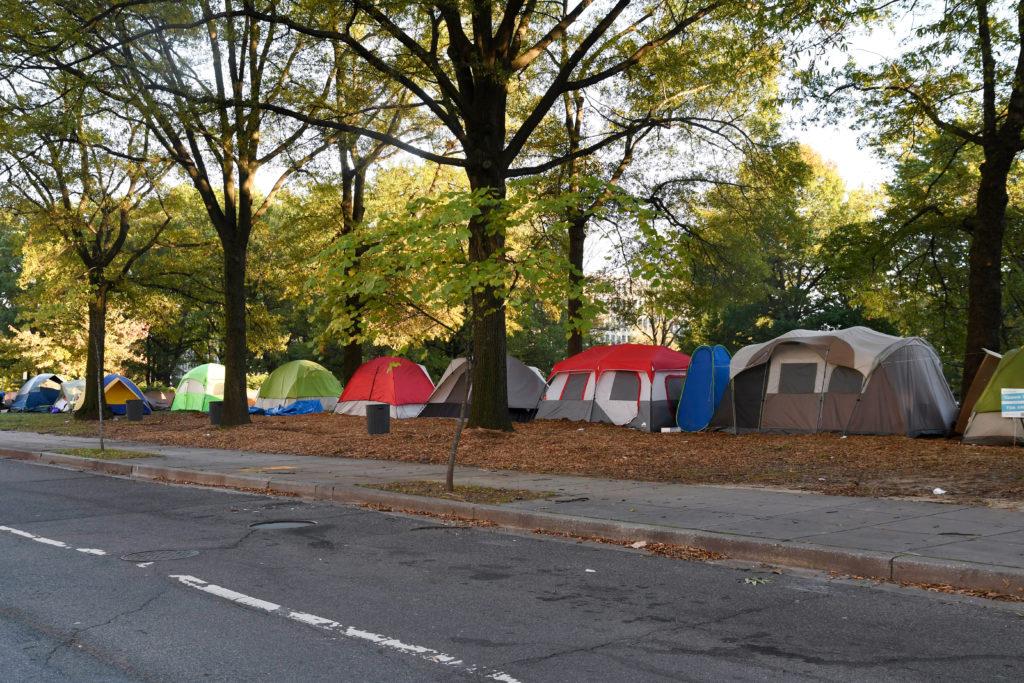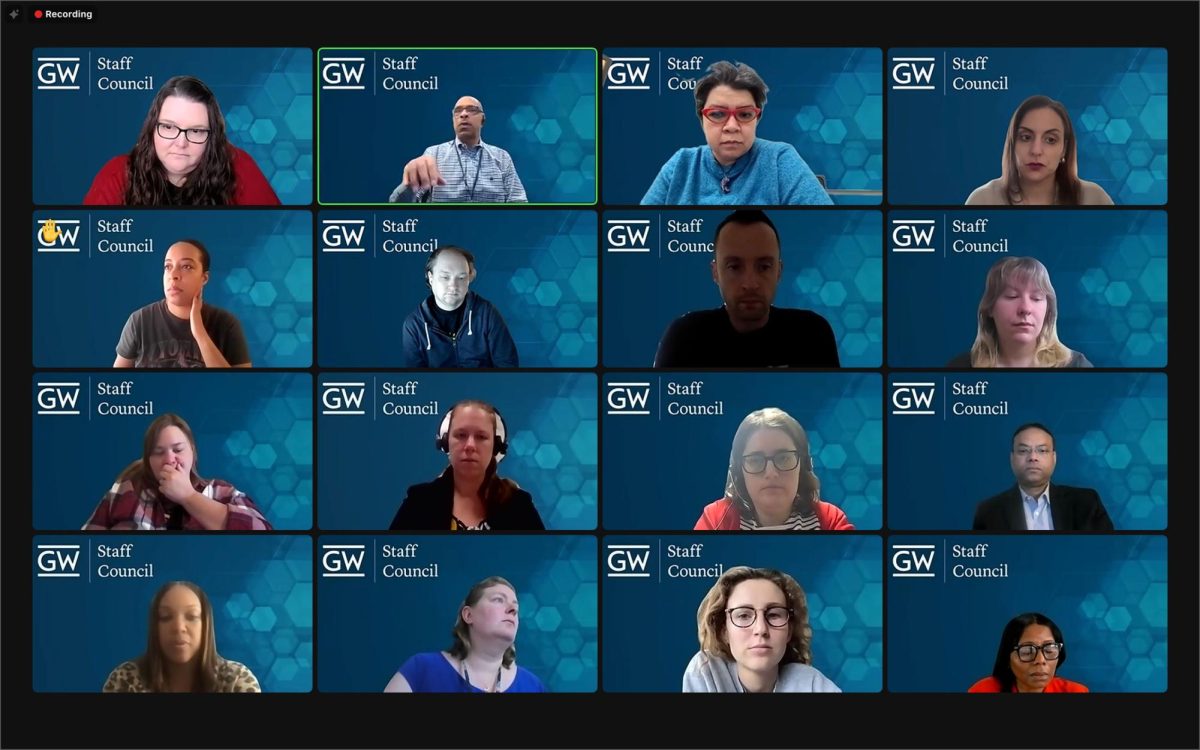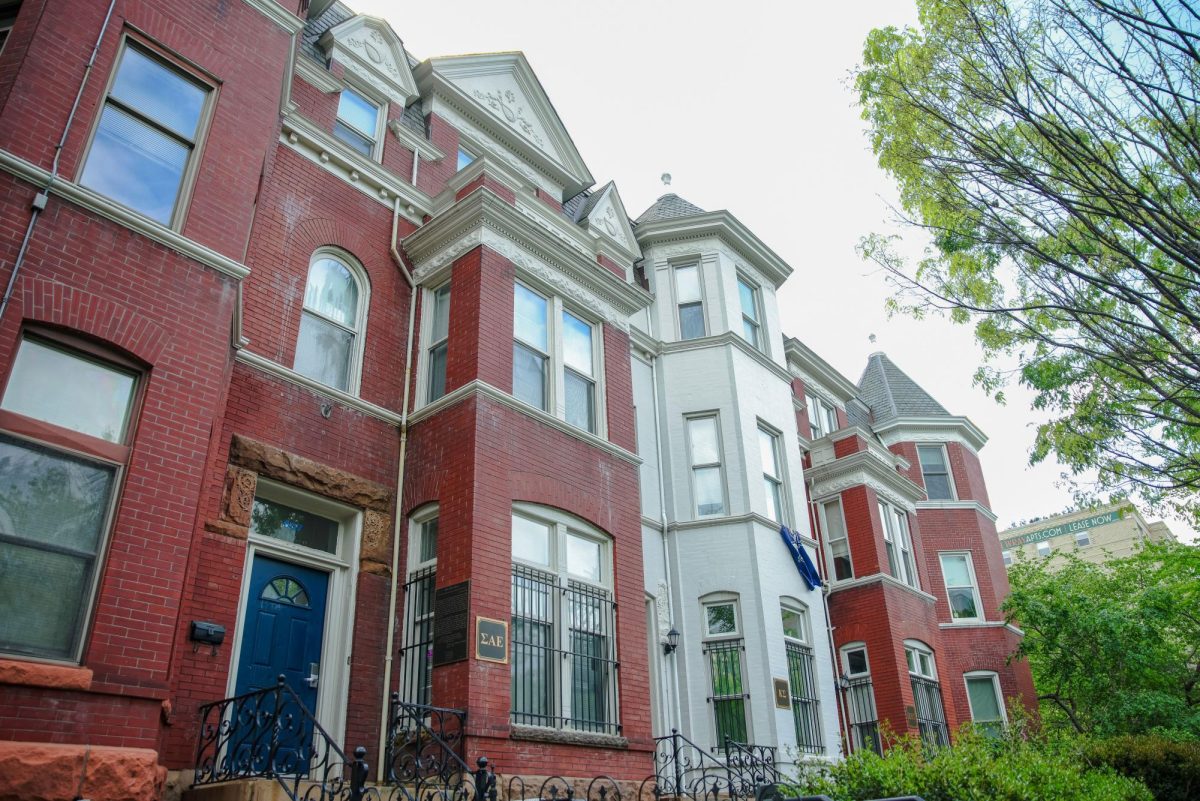Senior Yannik Omictin spent a Saturday late last month digging through feet of wood chips to re-earth the grounds of a homeless encampment on the 2000 block of E Street.
The wood chips were the remnants of a homeless encampment cleaning during which District officials cleared out settlements to cut down tree branches ready to fall on the surrounding area. After the cleaning, wooden bits were left scattered across the site.
Omictin, who was elected to the Foggy Bottom and West End Advisory Neighborhood Commission earlier this month, is one of a dozen students contesting the District’s homeless encampment cleanups. He said the group is working to connect students with locals experiencing homelessness to help them move their belongings out of harm’s way during a city cleanup.
“What I’m really upset about is the city has failed unhoused people time and time again,” Omictin said. “It’s not just about sanitation. Obviously, the fact that they are unhoused, to me, is a city failure to regulate the housing market properly, a failure to provide ample social services, a failure to make sure people are safe and have a healthy, dignified existence.”
In a cleanup, or “engagement,” the District gives encampment residents two weeks’ notice to vacate “when a site presents a security, health or safety risk and/or interferes with community use of such places.” Although the Centers for Disease Control and Prevention issued guidelines at the onset of the COVID-19 pandemic advising cities to stall full homeless encampment cleanups, the District has continued the practice.
The CDC guidelines, last updated in August, warned that conducting cleanups could increase the potential for infectious disease spread after residents disperse from their encampment.
Omictin said while the group doesn’t have a long-term plan for combatting homelessness evictions and cleanups, the group will work to aid individuals experiencing homelessness “whenever and wherever possible.”
During the E Street cleanup late last month, Omictin said many residents didn’t move their belongings until the last minute with the hopes of returning later that day. He said involved students arrived at the encampment site the morning of the cleanup to help residents evacuate.
“That morning, a lot of folks were in a bit of a rush, as is normal,” Omictin said. “You see the big bulldozer come by at 10 in the morning sitting there on the side of the road and you’re like, ‘Oh, shoot! I’ve got to move my stuff out.’”
As the bulldozer slowly crept in, students, encampment residents and other locals scrambled to move belongings out of the vehicle’s way, but many tents and sleeping pallets were damaged in the process, he said.
After students left the site following the cleanup, Omictin said city workers with the District Department of Transportation started trimming branches off nearby trees that were at risk of falling onto encampment residents. He said the workers left around 2 p.m., but when students and encampment residents returned, they found the old campground smothered with plant debris.
“They left behind a massive pile of debris of wood chips or tree debris,” Omictin said. “In some places, this stuff was like 2 feet high. You could literally sink into it if you put your foot in it.”
Senior Dylan Basescu, who helped shovel out the encampment site, said he thinks city workers intentionally spread the wood chips across the encampment’s surface to ensure the unhoused residents weren’t able to pitch their tents upon return. Basescu said while the cleanup wasn’t intended to officially evict residents from the area, the sharp, wooden terrain prevents future settlement.
“If you try to pitch a tent on wood chips, it’s going to tear the bottom – unusable,” Basescu said. “You can’t sleep in that. You can’t even pitch a tent in it. It’s not a solid surface – it’s almost like sand. So we had to clear that, and this is not legal for them to do. They don’t do this when the cops are around.”
Basescu said students called the Metropolitan Police Department about the city’s manual efforts to prevent the encampment residents from returning, but police said they were busy and have never responded to concerns.
Despite a 15 percent decline over five years, the District is estimated to have the highest homeless population per capita of any American city with about 1,000 homeless per 100,000 residents, according to a 2019 report from the U.S. Department of Housing and Urban Development.
Sward Tondoneh, the communications director for the District’s Deputy Mayor for Health and Human Services Beatriz Otero, did not return multiple requests for comment.
As D.C. continues to operate its encampment cleanups throughout the pandemic, experts in homelessness said cities providing more affordable housing options can help mitigate the struggles of unhoused individuals, especially during the pandemic.
Elizabeth Bowen, a social work professor at SUNY Buffalo, said city governments should work to ramp up social services, from providing hand sanitizer near encampments to funding long-term projects that connect people to housing, citing a California state-led project called Project Roomkey, which is providing unhoused residents private housing during the pandemic.
“Even if we don’t have the crisis of COVID-19, how can we get more people into housing more quickly and into ideally safe, permanent affordable housing?” she said. “This isn’t really a question of short-term shelter – that’s not a solution to homelessness – but how do we get more people into sustainable, safe housing?”
Stephen Pimpare, a social policy professor at the University of New Hampshire, said the cost of living is usually the biggest determinant of a city’s homeless population, and urban governments must start ensuring everyone with a job receives access to affordable housing.
“It’s a problem of access to affordable housing,” he said. “Plain and simple. There’s wide consensus from those who have studied it, saying that the first step is always to get someone in a home, to get a roof over their head.”
Yutong Jiang contributed reporting.










